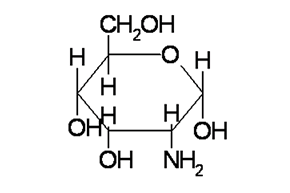
Glucosamine, with or without chondroitin, is a popular and high selling neutraceutical with claims to improve symptoms associated with painful osteoarthritis (OA). Clinical trials testing purported benefits have yielded mixed results, with manufacturer sponsored trials showing benefits while most unbiased studies have generally not shown benefit over placebo. Previously, in a large clinical trial of glucosamine hydrocholoride with or without chondroitin sulfate, neither agent demonstrated efficacy over placebo in treating pain in individuals with knee OA. Here, Sawitzke and colleagues report the effect of supplementation on radiographic progression over 2 years from the same trial (Arthritis Rheum 2008; 58(10): 3183).
Methods
The Glucosamine/Chondroitin Arthritis Intervention Trial (GAIT) enrolled men and women > 40 years of age with painful radiographic knee OA that was not end-stage. Patients were randomized to receive blinded treatment with either glucosamine (500 mg 3 times a day), chondroitin sulfate (400 mg 3 times a day), glucosamine + chondroitin, celecoxib (200 mg a day), or placebo for 24 months. Radiographs were obtained using a standardized imaging protocol at baseline, and after 12 and 24 months of therapy. Narrowing of the medial tibiofemoral space over 24 months was compared between treatment groups.
Results
Among the 662 participant originally enrolled, 357 (581 knees) had at least one technically adequate follow-up radiograph, amounting to group sizes for the five randomized groups of between 59 and 80 subjects (94-135 knees) per group. Among those with assessable follow-up knee radiographs, most (64%) were female with a mean age of 57 years and a mean duration of OA symptoms of 10 years. Baseline characteristics were balanced between the five randomized groups. Joint space loss was more rapid in participants with grade 3 OA compared to those with grade 2; however, joint space loss was not significantly different among treatment groups compared to placebo. Likewise, none of the treatments was associated with slowing of OA progression, even after adjusting for baseline joint space width, demographics, OA symptoms, OA duration, weight status, OA grade, treatment and follow-up time, and recruitment site. In analyses stratified by OA grade, those with grade 2 OA treated with any agent (including celecoxib) had non-significant reductions in joint space loss compared to placebo, while those with grade 3 OA treated with any agent had non-significant increases in joint space loss compared to placebo.
Conclusions
Over two years of use, neither glucosamine nor chondroitin, used singly or in combination, slowed radiographic progression of symptomatic knee OA.
Editorial Comment
These data are convincing that there is no structural benefit for using glucosamine/chondroitin for patients with knee OA. The same study from an earlier publication demonstrated that there was no benefit over placebo in relieving knee OA pain, either. Thus, it is very difficult to place this class of neutraceuticals in the treatment paradigm using a data-driven approach. Smaller, less rigorous studies funded by the various manufacturers have demonstrated both symptomatic and radiographic benefits to using different formulations of glucosamine and/or chondroitin. Whether these differences are related to true effects of the drug not picked up by the GAIT study or to methodology and bias is not readily known.
Some patients do report improvements in knee OA symptoms with the use of glucosamine with or without chondroitin. Whether this effect is entirely due the placebo effect is difficult to know on a patient by patient basis. If patients report benefit, then these data do not suggest they should be taken off of their supplements. However, if they are not having symptomatic benefit, these data do suggest that the supplement should not be continued in an effort to prevent disease progression.

